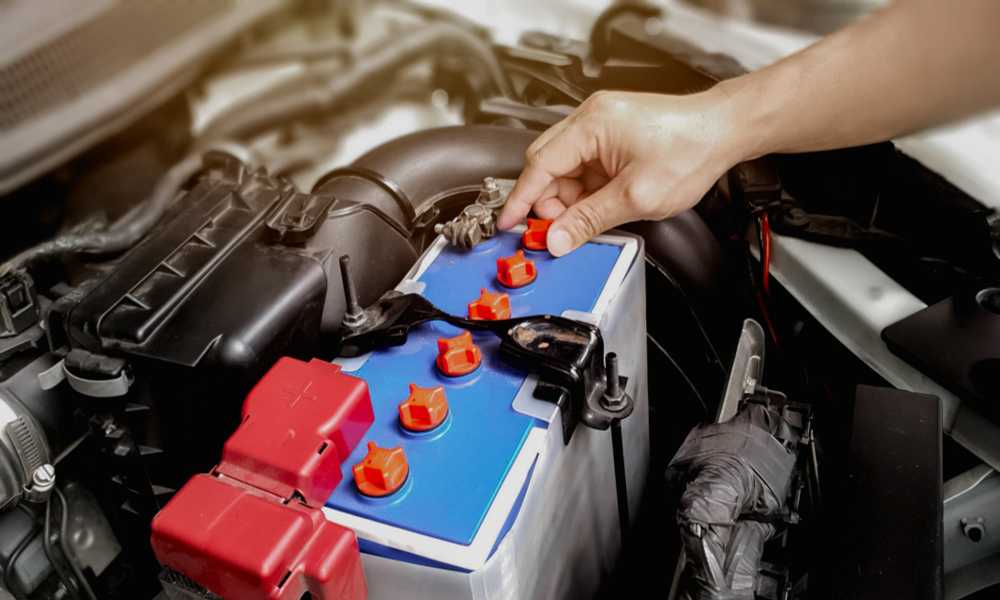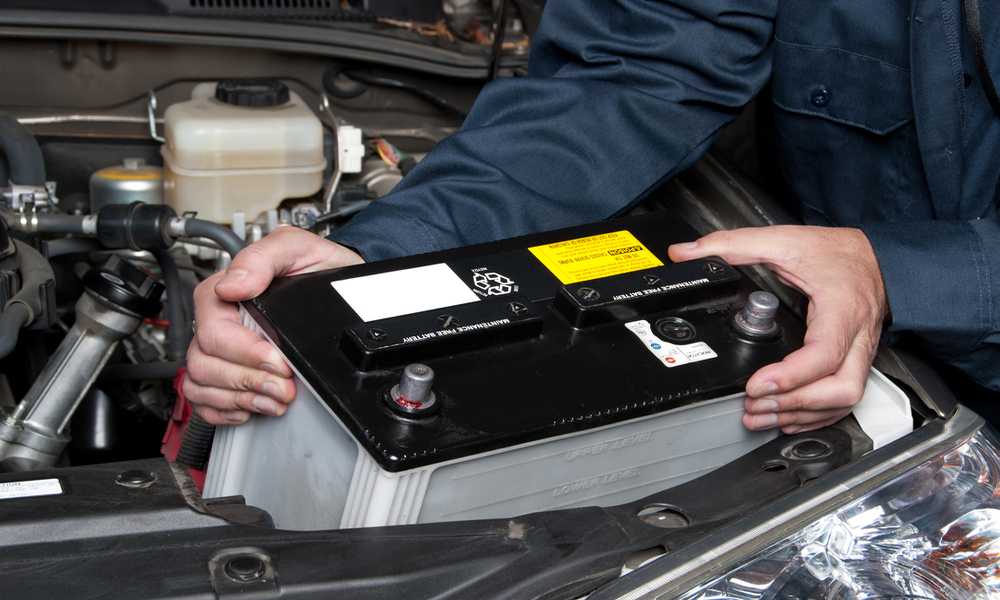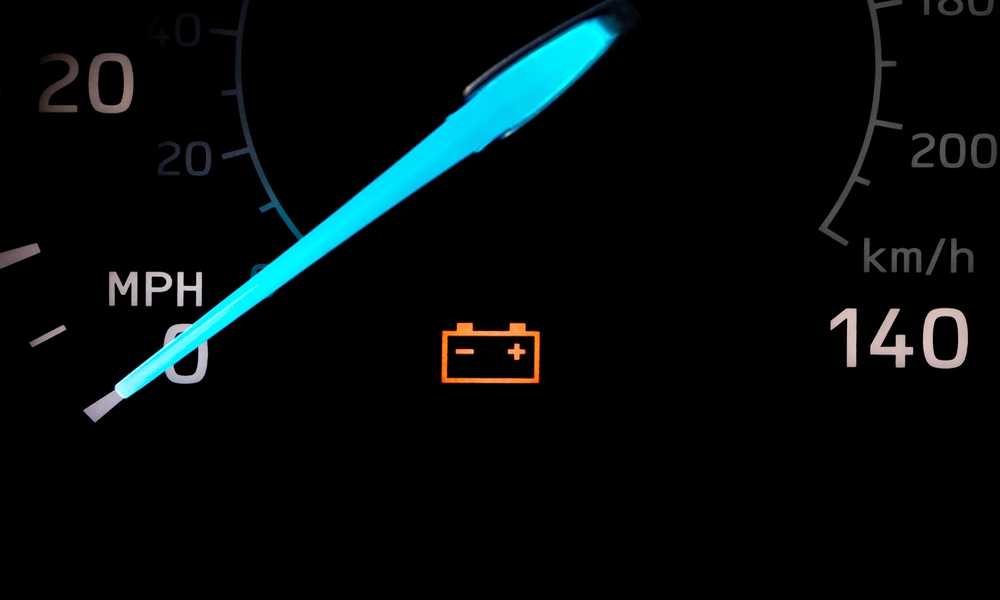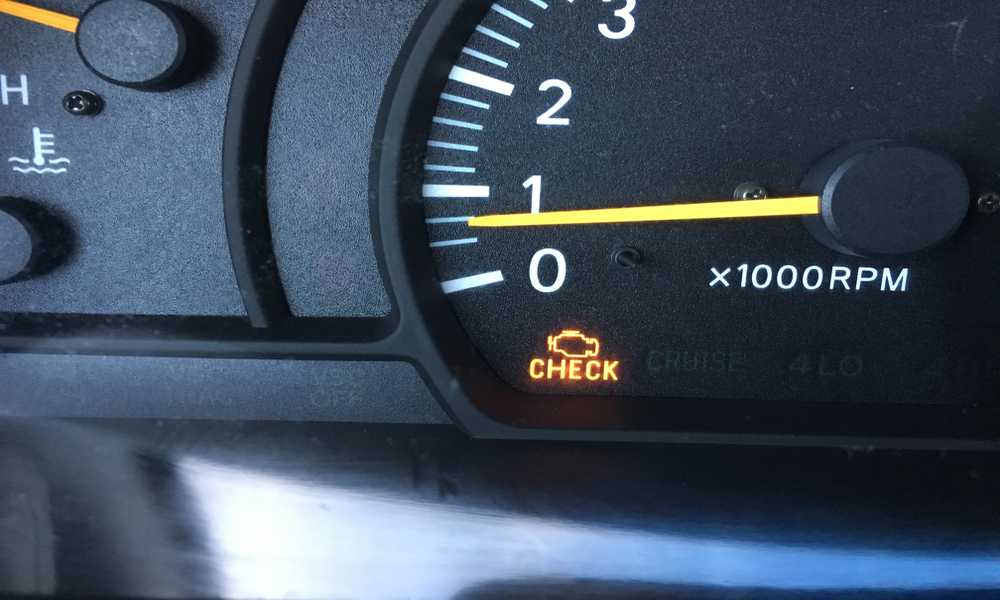Is your check engine light stubbornly glowing, even after you’ve replaced your car battery? Don’t fret! This perplexing issue can leave any driver scratching their head. After all, you’re simply trying to do routine maintenance by changing the battery, and now you’re faced with a persistent check engine light. But fear not! In this blog post, we’ll explore the possible causes of why your check engine light on after battery change and provide some helpful tips for resolving the issue. So buckle up and get ready to dive into the world of automotive diagnostics as we unravel this mystery together!
Causes of check engine light on after battery change
1. Battery is weak or dead

One possible cause of the check engine light coming on after a battery change is if the battery itself is weak or dead. When your car’s battery is not supplying enough power to the various components and systems in your vehicle, it can trigger the check engine light. A weak or dead battery may be unable to provide sufficient voltage for proper operation of the engine control unit (ECU) and other electronic systems. This can result in sensor readings that are out of range or inaccurate, leading to the activation of the check engine light.
To fix this issue, you may need to replace your battery with a new one that has sufficient charge. It’s important to choose a high-quality battery that meets your vehicle’s specifications. Additionally, regularly testing and maintaining your car’s battery can help prevent future issues with its performance. If you’re unsure whether your battery is weak or dead, you can have it tested at an automotive service center. They will be able to determine if it needs replacement or if there are any other underlying issues contributing to the check engine light being illuminated. Remember, addressing a weak or dead battery promptly can help prevent further damage and potential breakdowns while driving. So don’t ignore that pesky check engine light!
2. Loose or corroded battery terminals
Over time, the battery terminals can become loose or covered in corrosion, preventing a proper connection between the battery and the vehicle’s electrical system. When there is a poor connection at the battery terminals, it can lead to voltage drops and fluctuations in the electrical system. This can trigger various sensors in your car’s engine control unit (ECU) to detect an issue and illuminate the check engine light.
To fix this problem, you will need to inspect and clean your battery terminals. Start by disconnecting the negative (-) terminal first and then the positive (+) terminal. Inspect for any signs of corrosion or damage such as rust or build-up around the terminals. Using a wire brush or sandpaper, gently scrub away any corrosion from both the terminal posts and cable connectors until they are clean and shiny. Reconnect them tightly, making sure there is no movement when you try to wiggle them.
Regular maintenance of your battery terminals should help prevent future issues with loose or corroded connections that could trigger your check engine light. Remember to perform routine checks on your car’s electrical components to ensure everything is functioning properly!
3. Short to ground
Another possible cause of the check engine light coming on after a battery change is a short to ground. This occurs when there is an electrical connection between a wire or component and the vehicle’s chassis or body, causing an abnormal flow of electricity. A short to ground can occur due to damaged wiring, loose connections, or faulty components. When the battery is disconnected during a battery change, it can disrupt the electrical system and potentially trigger this type of issue.
To fix a short to ground, thorough inspection and troubleshooting are necessary. This may involve checking for damaged wires or connectors, testing components for proper functionality, and repairing any faults that are discovered. It’s important to address a short to ground promptly as it can lead to further electrical problems if left unresolved. Consulting with a professional mechanic or electrician who specializes in automotive electrical systems is recommended for accurate diagnosis and repair. Remember, resolving issues related to shorts in your vehicle’s electrical system requires expertise and should not be attempted without proper knowledge and tools.
4. Battery cables are damaged

One common cause of the check engine light coming on after a battery change is damaged battery cables. The battery cables are responsible for transmitting power from the battery to various components of the vehicle. If these cables become damaged or worn out, it can disrupt the flow of electricity and trigger the check engine light. There are several reasons why battery cables may become damaged. Over time, they can corrode due to exposure to moisture and other elements. This corrosion can weaken the connection between the cable and the battery terminal, leading to electrical issues in your vehicle.
Additionally, physical damage such as fraying or breaking of the cables can occur from accidents or rough handling during a battery replacement. These damages can result in poor electrical conductivity and trigger warning lights like the check engine light. To fix this issue, you will need to inspect your battery cables for any signs of damage or corrosion. If you notice any problems, it’s recommended to replace them with new ones. Ensure that all connections are secure and free from debris before connecting them back to your new battery. Remember that addressing any damaged parts promptly is crucial for preventing further complications down the road!
How to fix check engine light?
When your check engine light comes on after a battery change, it can be frustrating and worrisome. But fear not, there are steps you can take to fix the issue. The first thing you should do is check the battery itself. Make sure it is fully charged and in good condition. If the battery is weak or dead, it may need to be replaced.
Next, inspect the battery terminals for any signs of corrosion or looseness. Corroded or loose terminals can cause a poor connection and trigger the check engine light. If everything looks fine with the battery and terminals, then there may be a short to ground somewhere in your vehicle’s electrical system. This could be caused by damaged wiring or faulty components. In this case, it’s best to consult a professional mechanic who can diagnose and repair the issue.
In some cases, simply disconnecting and reconnecting the battery cables can reset the check engine light. However, this should only be done if you are confident in doing so safely. Remember that fixing an illuminated check engine light after a battery change requires careful diagnosis and potentially complex repairs. It’s always recommended to seek professional help if you’re unsure about tackling these issues yourself. Stay tuned for more tips on how to prevent check engine lights from coming on after replacing your car battery!
Is your check engine light on after battery change?
After replacing your car battery, you might wonder why your check engine light suddenly illuminates. Well, the answer lies in the complex relationship between your vehicle’s electrical system and its onboard computer. When you disconnect the old battery and install a new one, it disrupts the power supply to the car’s computer. This temporary loss of power can cause various sensors and systems to reset or lose their stored data. As a result, when you start your car with a fresh battery, the computer needs some time to recalibrate itself and relearn certain parameters.
Additionally, disconnecting the battery also clears any error codes that were previously stored in the system. So when you start driving again after replacing the battery, if there are any underlying issues with your vehicle (such as problems with emissions or fuel mixture), those errors will be detected by sensors and trigger your check engine light.
It’s important to note that not all vehicles react in this manner after a battery change. Some cars may require manual resetting of specific systems using specialized diagnostic tools. Consulting your vehicle’s owner manual or visiting an auto repair shop can help address these situations more effectively. Stay tuned for our next blog section where we’ll explore what steps you should take immediately after replacing your car battery to prevent that pesky check engine light from turning on again!
What should you do after replacing car battery to prevent check engine light?
After replacing the car battery, there are a few steps you can take to prevent the dreaded check engine light from coming on. First and foremost, make sure that all connections are secure and tight. Sometimes, a loose connection can cause electrical issues and trigger the check engine light.
Next, it’s important to reset any error codes that may have been stored in the vehicle’s computer system. This can typically be done by disconnecting the negative terminal of the battery for about 15 minutes and then reconnecting it. Additionally, if your car has any aftermarket modifications or accessories such as an aftermarket stereo or alarm system, double-check their wiring to ensure they haven’t interfered with any sensors or systems in your vehicle.
If you’re still experiencing issues after following these steps, it may be necessary to bring your car to a professional mechanic who has access to diagnostic equipment. They’ll be able to identify any underlying problems that could be causing the check engine light to remain illuminated. By taking these precautionary measures and addressing potential issues promptly, you can help prevent the check engine light from coming on after replacing your car battery.
How long does it take to clear check engine light after taking off battery?

After replacing your car battery, you may notice that the check engine light remains illuminated. This can be frustrating and leave you wondering how long does it will take for the light to clear. Well, the truth is, there’s no one-size-fits-all answer to this question. The time it takes for the check engine light to reset after removing the battery can vary depending on several factors. In some cases, it may only take a few minutes or hours for the light to go away. However, in other situations, it could take days or even weeks before the system clears itself.
One reason why it might take longer for the check engine light to reset is if there are any underlying issues with your vehicle that need attention. The onboard computer system needs time to run diagnostic tests and determine if there are any persistent problems. If you’re anxious about waiting for the check engine light to clear on its own, you can try resetting it manually. One way to do this is by disconnecting your car’s battery again and leaving it disconnected for at least 15-30 minutes before reconnecting it. Remember that clearing the check engine light doesn’t necessarily fix any underlying issues with your vehicle. If the problem persists after multiple attempts at resetting or continues reoccurring over time, then it’s best to have a professional mechanic diagnose and address any potential problems.
Can a new battery cause a check engine light?
It’s a question that many car owners may have after replacing their vehicle’s battery. While it may seem surprising, the answer is yes, it is possible for a new battery to trigger the check engine light. One reason this can happen is due to the resetting of the car’s computer system when disconnecting and reconnecting the battery. This reset can cause certain sensors to temporarily malfunction or send incorrect readings to the computer. As a result, the check engine light may turn on as a precautionary measure.
Another possibility is that there could be an underlying issue with another component in your vehicle that has been masked by a weak or failing battery. When you install a new battery and restore proper voltage levels, it could reveal these hidden problems and prompt the check engine light to illuminate. If your check engine light comes on after installing a new battery, don’t panic just yet. In some cases, simply driving your car for several miles can allow the computer system to recalibrate itself and clear any false error codes. However, if the light persists or if you notice other issues with your vehicle’s performance, it’s best to consult with an experienced mechanic who can diagnose and address any potential problems.
Can a battery trigger a check engine light?
It’s a common question among car owners who have recently replaced their battery. The answer is yes, it is possible for a new battery to cause the check engine light to come on. When you replace your car battery, the power to the vehicle’s computer system is temporarily disrupted. This can cause some of the sensors and settings in the computer to reset or lose their memory. As a result, certain error codes related to emissions or other systems may be triggered, causing the check engine light to illuminate.
While this can be alarming, it doesn’t necessarily mean that there is something seriously wrong with your vehicle. In most cases, it just means that your car needs some time to recalibrate itself after the battery change. To help prevent this issue from occurring or resolve it quickly if it does happen, there are several steps you can take:
1. Drive your car for at least 20-30 minutes: This will allow the computer system to relearn its settings and clear any temporary errors.
2. Check for loose connections: Make sure that all cables and connections related to the battery are securely tightened.
3. Use an OBD-II scanner: If driving doesn’t clear the check engine light, you can use an OBD-II scanner (available at auto parts stores) to read and clear any error codes yourself.
4. Seek professional help if needed: If driving and scanning don’t resolve the issue or if you notice other problems with your vehicle’s performance, it’s best to consult a mechanic for further diagnosis and repairs.
Remember that each vehicle may respond differently after a battery change, so what works for one person may not work for another. Patience and proper troubleshooting techniques will go a long way in resolving any issues associated with a triggered check engine light after replacing your car’s battery.
Does the check engine light reset on its own?
The dreaded check engine light – it can be a source of stress and confusion for many drivers. One common question that arises is whether or not the check engine light will reset on its own. The answer? It depends. In some cases, the check engine light may turn off on its own after a certain number of driving cycles if the issue that triggered it has been resolved. This typically happens with minor issues such as a loose gas cap or temporary sensor glitch.
However, in other cases, the check engine light may persist until manually cleared using an OBD-II scanner. This is especially true for more serious problems such as engine misfires or emissions issues. If your check engine light comes on and stays on, it’s always best to have it checked out by a qualified mechanic to determine the underlying cause. Ignoring the warning could lead to further damage to your vehicle and potentially costly repairs down the line. Remember, while some instances of the check engine light resetting on its own are possible, it’s always better to err on the side of caution and seek professional advice when in doubt.
Why does my check engine light come on after a dead battery?

One common occurrence that many car owners experience is the check engine light coming on after a dead battery. It can be quite perplexing to see this warning illuminate, especially when you have just replaced the battery. So, why does this happen? When your car’s battery dies and you jump-start or replace it, the power disruption can cause certain systems in your vehicle to reset. This includes the engine control unit (ECU), which is responsible for monitoring various components of your car’s performance. The ECU relies on data from sensors throughout your vehicle to operate efficiently.
After a dead battery, the ECU may lose its stored data and revert back to default settings. As a result, it may detect minor issues or inconsistencies within the system, triggering the check engine light. Additionally, any pending diagnostic trouble codes (DTCs) that were not cleared before changing the battery could also contribute to the light staying on.
It’s important to note that while a dead battery can trigger the check engine light temporarily, it doesn’t necessarily mean there is a major problem with your vehicle. In most cases, once you start driving again and allow enough time for all systems to recalibrate themselves properly, the check engine light should turn off on its own. However, if you find that even after several days of driving, the light still persists or if other symptoms arise such as unusual noises or decreased performance, it would be wise to have a professional mechanic inspect and diagnose any potential underlying issues.
Final thoughts
It is not uncommon for the check engine light to come on after replacing your car battery. This can be attributed to various factors such as a temporary disruption in the electrical system or the need for an OBD-II reset. While it may cause some initial concern, there are steps you can take to prevent this issue and ensure a smooth transition when changing your battery. Make sure that all connections are secure and properly tightened during the installation process. This will help reduce any chances of electrical disruptions or loose connections that could trigger the check engine light.
Consider using a memory saver device when disconnecting your old battery. This small device plugs into your vehicle’s power outlet and helps maintain power to essential systems while you replace the battery. By doing so, you minimize the risk of triggering any error codes in sensitive components like the PCM or ECU. If your check engine light does come on after replacing the battery, don’t panic! Give it some time – usually around 2-3 days – for self-diagnostic tests to complete and errors to clear out naturally. However, if after this period of time the light remains illuminated or if you’re experiencing other issues with your vehicle’s performance, it’s best to consult a professional mechanic who can use an OBD-II scanner tool to diagnose and resolve any underlying problems.
Remember that while a new battery itself may not directly cause a check engine light, improper installation or handling during replacement could lead to related issues triggering warning lights in modern vehicles equipped with advanced electronic systems. By following proper procedures during battery replacement and allowing sufficient time for diagnostic tests to run their course post-battery change should help eliminate most concerns regarding why your check engine light is on after swapping batteries. Taking these precautions will keep both yourself and your vehicle running smoothly without unnecessary worry about unexpected warnings popping up on your dashboard. So remember: stay calm, follow instructions, and if in doubt, seek professional assistance. Happy driving!



